In the Mexican state of Guerrero, there is a dance drama—los Tlacololeros—in which a group of farmers hunt a dangerous jaguar. Such dances are apparently ancient. We find an area of jaguar hunting performances along the Costa Chica, the “little coast” where Guerrero and Oaxaca meet the Pacific ocean, and extending to Chiapas and Guatemala. These dances occur in a series of contiguous Native American cultures, such as the Nahua, the Amuzgos, the Mixtecs, and a variety of Mayan cultures. The Tlacololeros dance survives in an area known as the Tlapaneca, which was traditionally occupied by the Tlapanec Indians. According to Danzas y bailes traditionales del estado de Guerrero (Mexico, 2005, pages 66-84), this dance presently persists in the following towns—Chilpancingo, Chichihuaco, Tixtla, Apango, Mochitlán, Zumpango, Tecoanapa, Ayutla, Zitlala, Chilapa, and others. You may already be aware of the considerable variation in mask styles between these many towns, and Tlacalolero masks, large and small, will illustrate this. Over the next few weeks I will show you some real beauties. Some nearby towns dance the Tecuanes dance instead; there is considerable overlap in terms of mask designs.
Here is a YouTube™video from Petaquillas, Guerrero, a town that is in the municipio of Chilpancingo; the two towns are just 6 miles apart. Some of the Tlacololeros have black human faced masks while others have red, white, or gray faces along with a standardized costume. There is a magnificent Tigre(jaguar) and a dog that looks like a very mean wolf. The human faced dancers portray a number of roles such as farmer-hunters and a Rastrero, or “tracker.”
https://www.youtube.com/watch?v=V4oW-DteitU&list=PLxDpP5Tg_rizP5Gq1y7vJCAc8d3Yc0mJE&index=9
In this next video, from Chichihualco, all of the masks are black. I include this one to share the accompanying text, which is interesting in its explanation that this dance appears to be a surviving form of an ancient supplication for rain.
https://www.youtube.com/watch?v=BI9Rx1wfh5E
Now here are some Tigre masks from these towns to get us started. I originally showed you these in October, 2014. The Tlacololeros pretend to hunt such jaguars. The first, carved from wood, is in the style of Tixtla.
This child’s paper mache Tigre is from Chilapa.
This larger wooden mask is also from Chilapa.
There are more photos of Jaguar masks from this area in my October 2014 posts.
https://mexicandancemasks.com/?m=201410
The Spanish word “tlacolol” refers to the Mexican Indian practice of farming on steep or uneven ground, such as on sloping hillsides. In English we find a related concept—”contour farming,” in which farmers plow curving rows to adapt to uneven terrain. However,these Mexican hillside plots are too steep to plow, so the farmers cut the standing brush with machetes and then they set the debris on fire, creating a field that is fertilized with ashes. In English, this practice is called “slash and burn cultivation,” and informally tlacololeros has come to mean “farmers who slash and burn” their fields. Here is a hillside “milpa” (field) to give you an idea about the terrain; actually this is a field in the Sierra de Puebla where corn has been planted between fruit trees.
Now we will look at a few Tlacololero masks that resemble those in today’s first video.
This small mask is the appropriate size for a child. I bought this mask in 2002 from John Isaac, in Albuquerque, New Mexico.
Pieces of hide supply hair for the brows, mustache, and beard.
This mask is 7 inches tall, 6 inches wide, and 3½ inches deep.
The back is stained from heavy use, and there is an old metal reinforcement to stabilize a mid-line crack. It is interesting that this applied metal has the shape of a cross.
The next mask is somewhat larger, at the lower limit for a full-sized Tlacolero mask. I got this mask from Sergio Roman of Mexico City in 1997. It is old and heavily worn.
The scuffed paint implies a history of rough use.
There is a stable crack in the chin.
This mask is 7½ inches tall, 6½ inches wide, and 4½ inches deep.
The back is stained from heavy use.
This last mask has a gray complexion and is full sized.
This mask has a closed mouth, whereas many Tlacololero masks have open mouths.
This mask is 10 inches tall, 8 inches wide, and 4½ inches deep.
The back of this mask is so darkly stained that one wonders if some protective coating has been applied. On the other hand, the worn paint on the face does document a history of extensive use.
Here are all three of these masks together, to demonstrate the differences in their sizes.
Next week I will show you some more Tlacololero masks in this style.

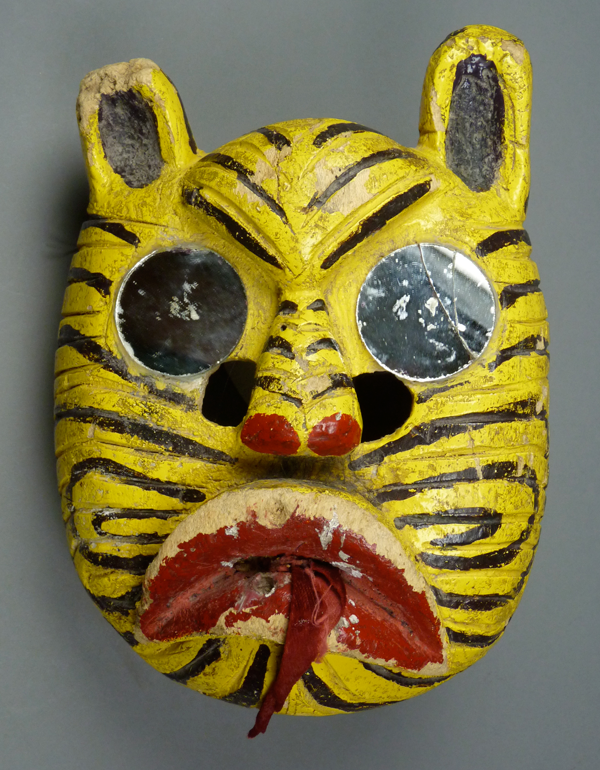
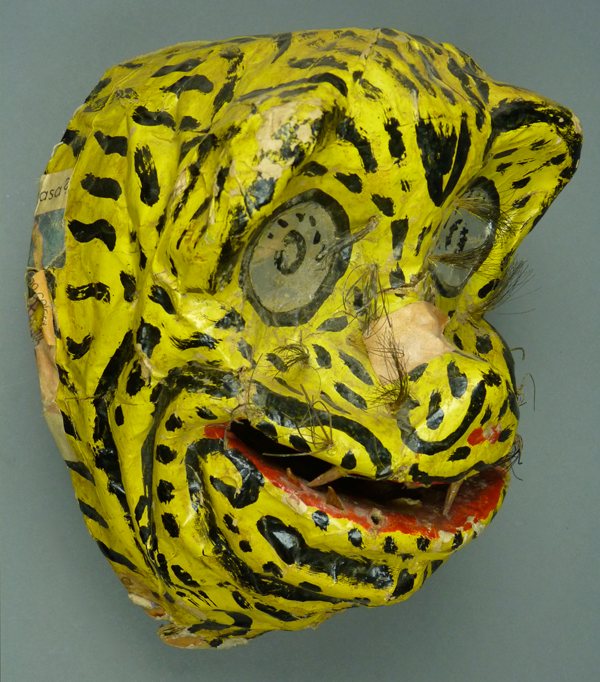
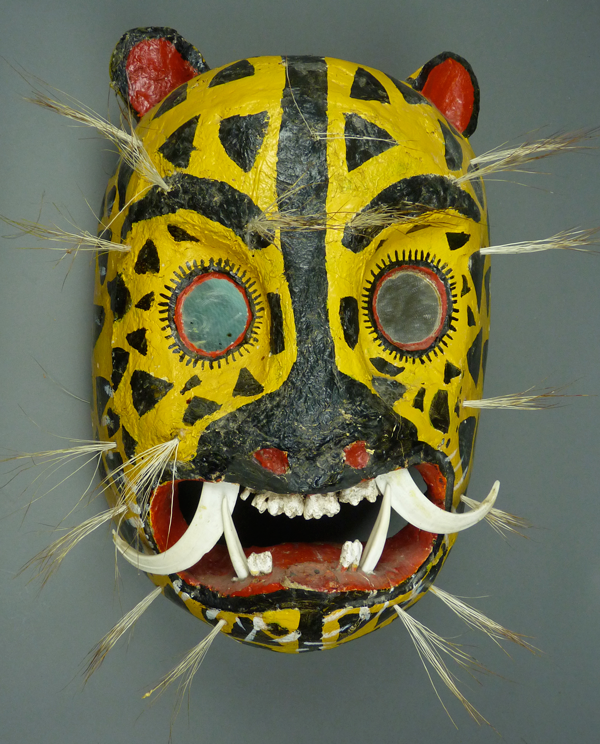
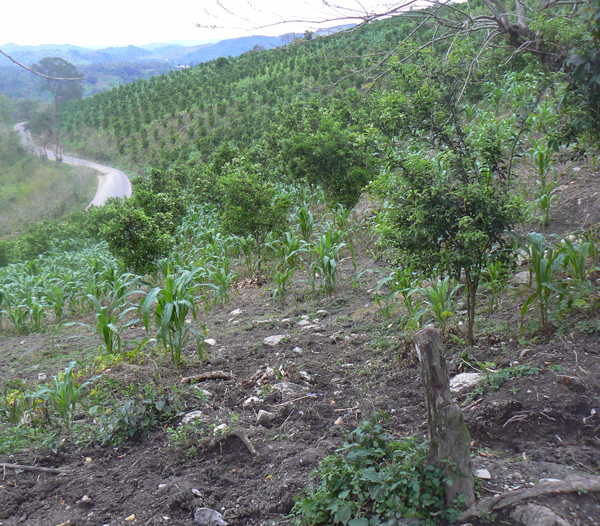
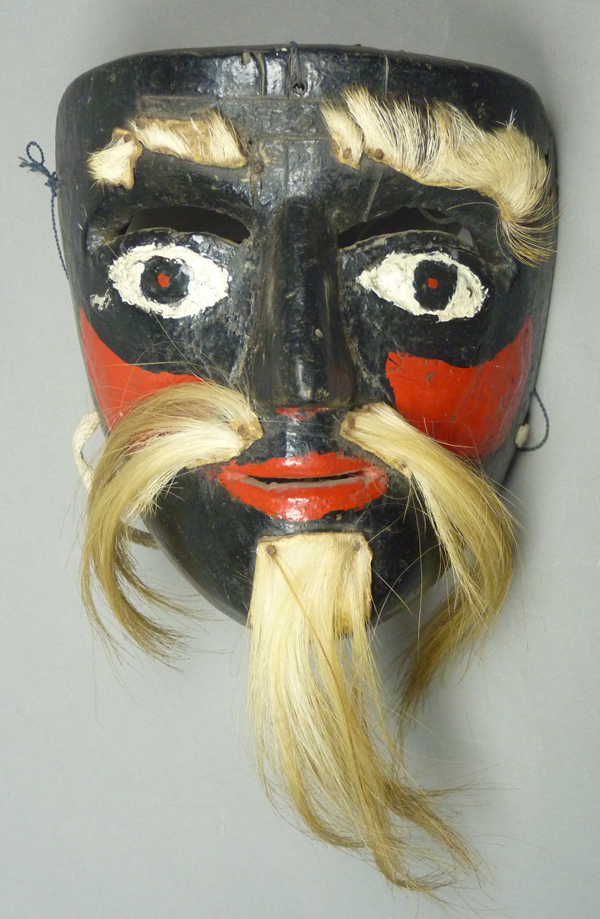
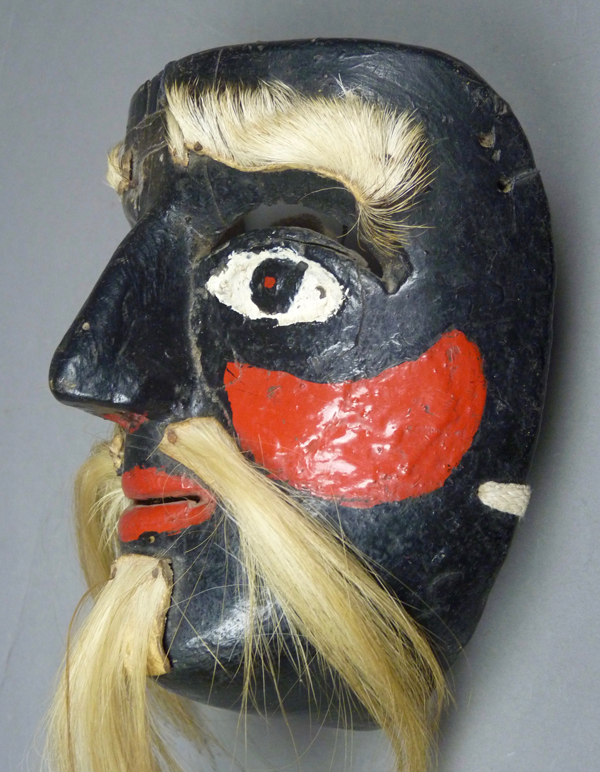
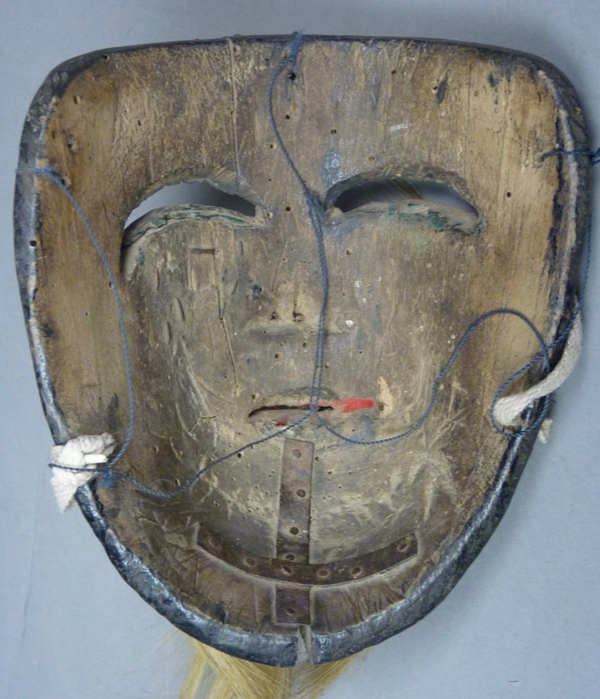
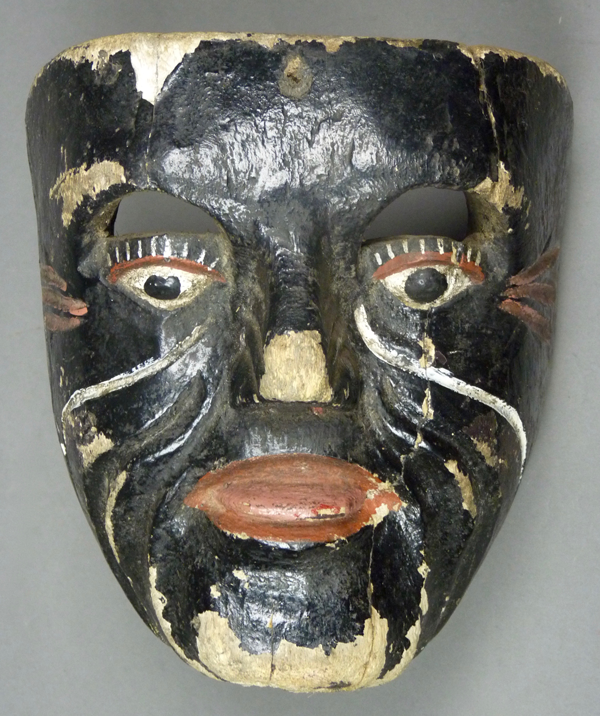
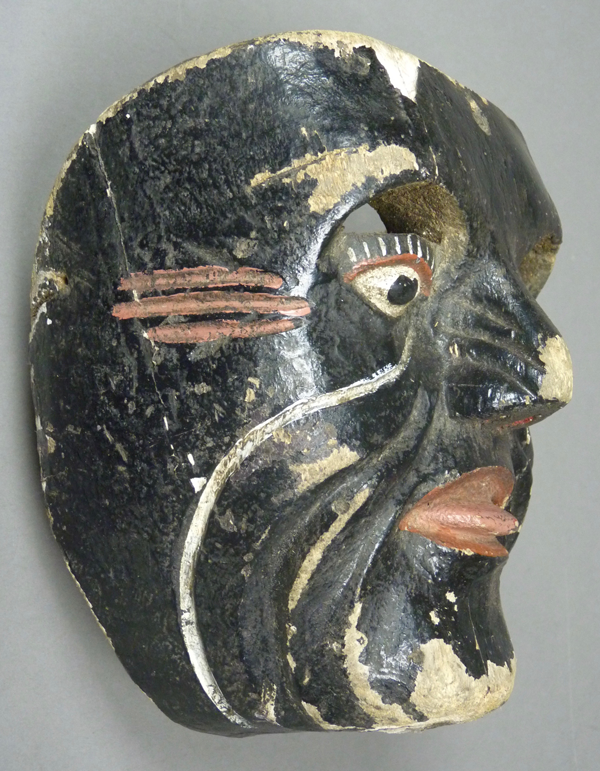
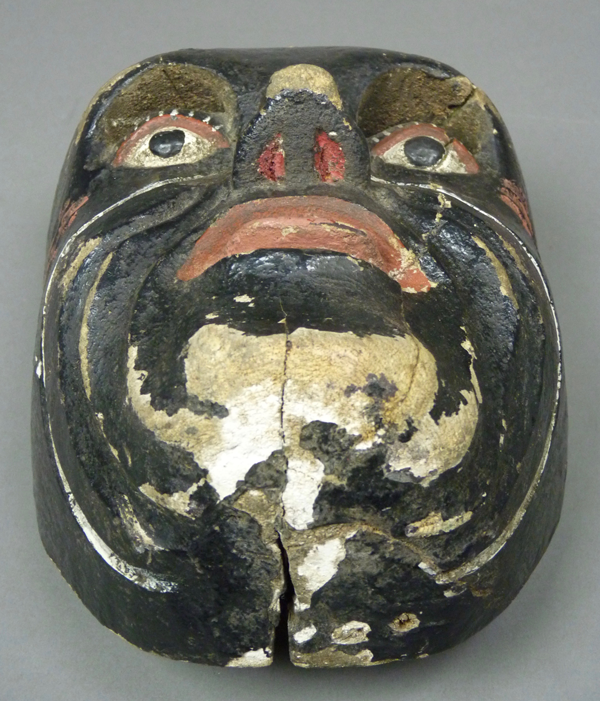
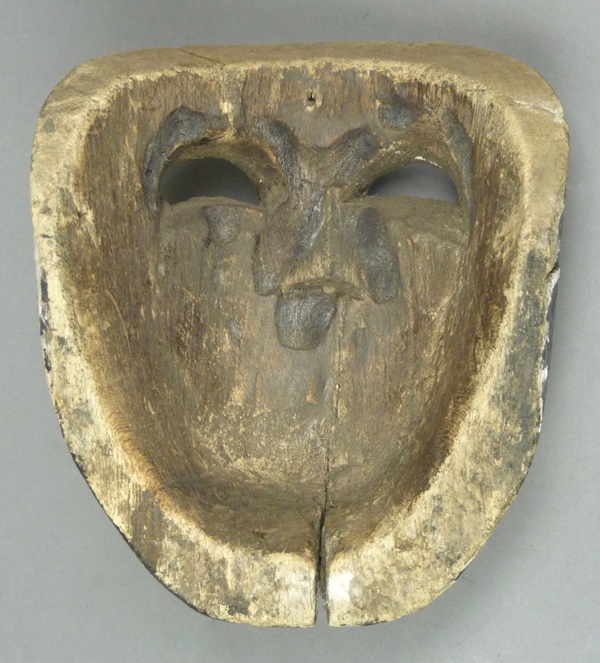
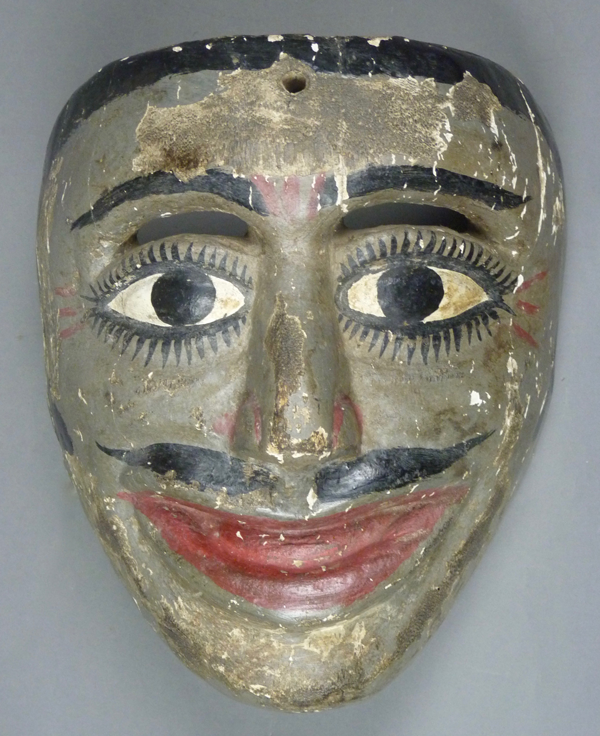
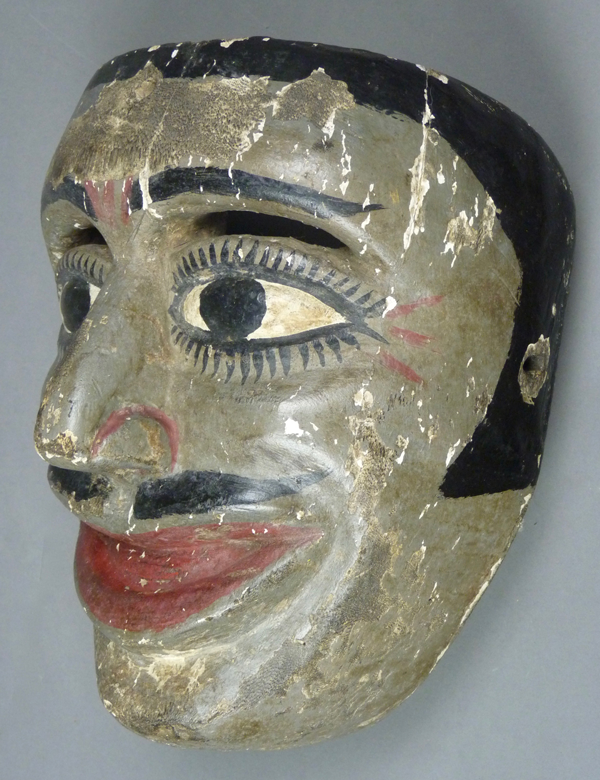
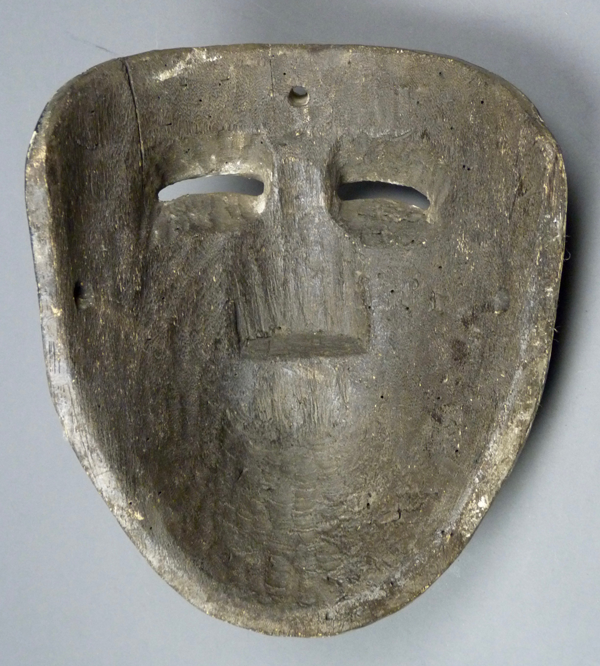
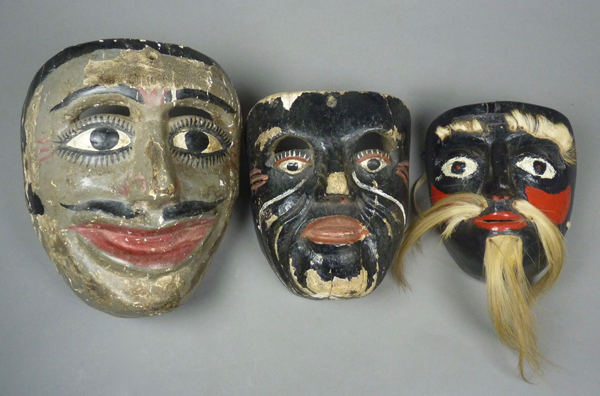
Loved your post <3
Saida
Thank You.
Bryan Stevens